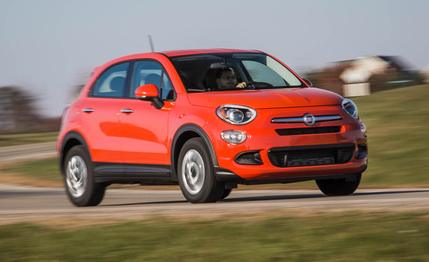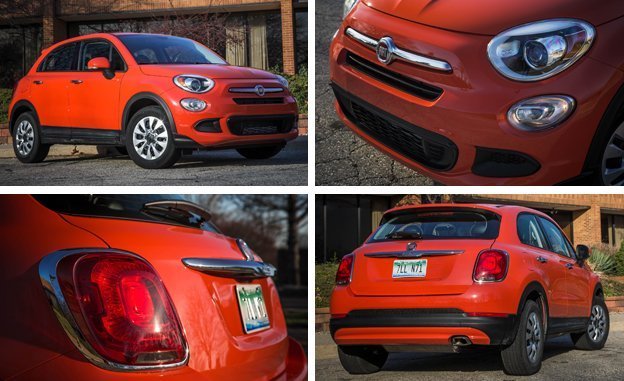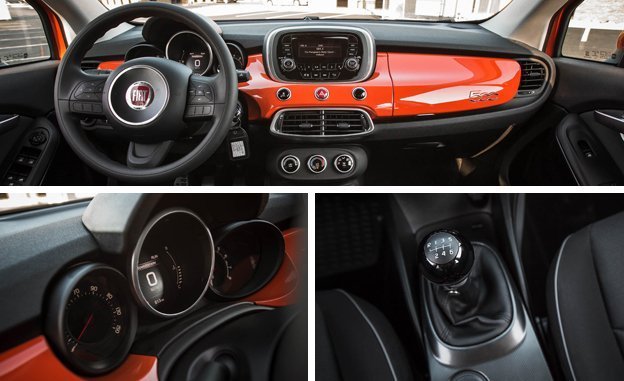 Instrumented Test
Instrumented Test
Base models with a low price point have existed practically since the dawn of the automotive age, with the express purpose of luring buyers into showrooms, where smiling salespeople then tempt them into more-expensive models. But one relatively recent development is that in some vehicle families, if you want a manual transmission your only choice is the base model. Case in point is Fiat’s 500X small crossover.
In the 500X, this also means foregoing all-wheel drive, the more-powerful 180-hp 2.4-liter Tigershark four-cylinder, and several optional interior features. However, this turns out to be not an entirely bad thing. In two tests of the 500X with the Tigershark/nine-speed-automatic combo, we emerged with lukewarm feelings toward the transmission, whose constant hunting and penchant for getting into higher gears ASAP become wearisome.

In contrast, the Fiat’s six-speed—like any manual—allows the driver to pick the gear suited to the moment and hold it as long as desired. What a concept! To be fair, the nine-speed’s manual mode allows this, too, but most automatics tend to be driven in drive mode most of the time. In terms of function, the six-speed’s throws are a tad long, but the engagements are reasonably crisp and the clutch is sweet, if a bit light.
The manual is mated to Fiat’s 160-hp 1.4-liter MultiAir turbo four, a combo that makes for a zero-to-60-mph sprint of 7.8 seconds and a quarter-mile run of 16.0 at 87 mph. That’s certainly competitive by subcompact-crossover standards. It’s also distinctly quicker than the times we recorded for the 2.4-liter automatic (8.7 to 60, 16.8 at 82 in the quarter-mile). Surprising? Well, the MultiAir is torquey, with 184 lb-ft arriving at 2500 rpm, but mass is probably a bigger factor. Our front-drive 500X weighed in at 2954 pounds, while the all-wheel-drive Tigershark was heavier by 407 pounds.
And, of course, mass also affects fuel economy. The AWD 2.4-liter 500X is rated by the EPA at 21 mpg city and 30 mpg highway; the front-drive 1.4-liter is better by 4 mpg in both measures. That said, the manual model encourages more-enthusiastic driving, so our real-world mileage was a little below expectations: 23 mpg over the course of our test, versus 24 for the Tigershark.

But enthusiastic driving is the point. The 500X is one of the more athletic competitors in this rapidly expanding class, with a solid chassis, well-controlled body motions, and surprisingly accurate electric power steering. Moreover, the manual gearbox seems to optimize the Fiat’s responses as well as the driver’s sense of involvement.
Our only disappointment was braking performance. While the brakes themselves are easy to modulate, offer good pedal feel, and are fade free, the 70-to-zero-mph stopping distance is lengthy: 177 feet. Compare that to 163 for the Tigershark test car, which was the best in our subcompact-crossover comparison. Tires likely contributed to this disparity. The Tigershark rolled on 215/60-17 Nexen Classe Premieres, while this test example had Continental ProContact TX tires, size 215/60-16.
As noted, opting for a 500X with a manual gearbox takes a number of other options off the table. On the other hand, the base version (Pop, in Fiat trim-level parlance) of this little crossover isn’t exactly bare. It’s also entertaining to drive and it looks slick—a price tag of just under $21K makes it look even better.